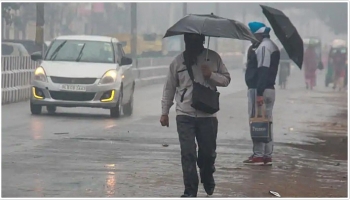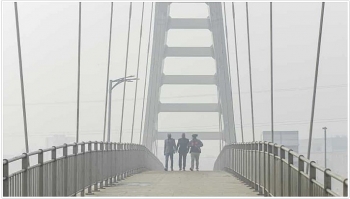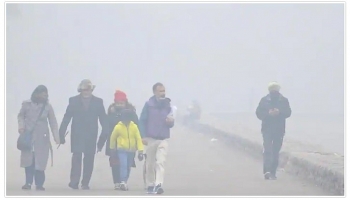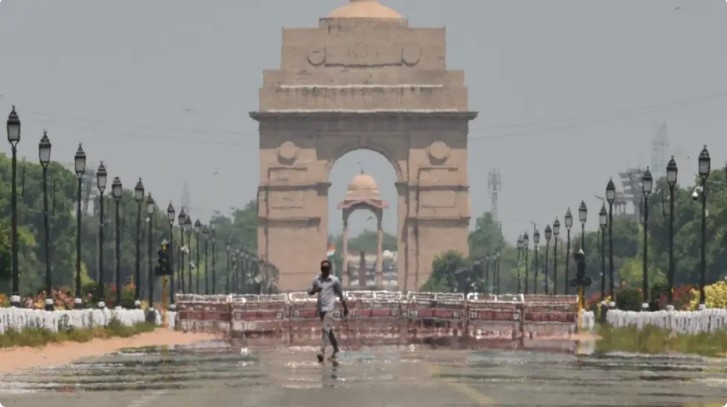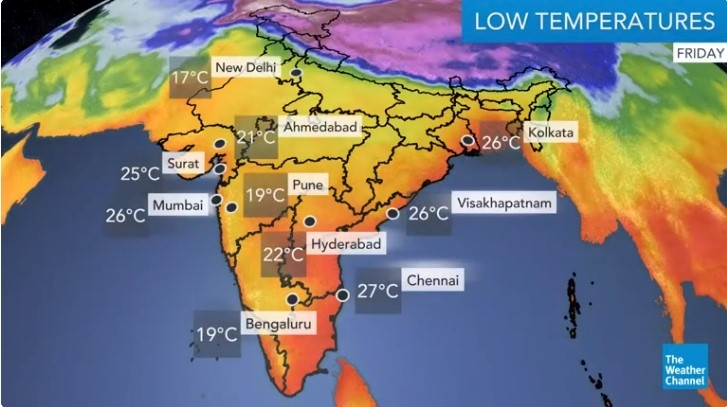India weather forecast latest, January 5: Severe cold wave conditions to blanket some isolated places
According to Skymet Weather, a Western Disturbance is over Pakistan and adjoining Jammu and Kashmir. An induced cyclonic circulation is over Southwest Rajasthan and adjoining areas.
The Confluence zone is over Northwest and adjoining Central parts of the country. South westerly humid winds from the Arabian Sea are merging with south easterly humid winds from the Bay of Bengal.
Rain and snow will continue over many parts of Western Himalayas until January 5th, intensity off will reduce on January 6th.
Light to moderate rain and thundershower with few intense spells will occur over Punjab, Haryana, Delhi, West Uttar Pradesh, east and North Rajasthan and parts of West Madhya Pradesh until January 5th. Hail storm activities are also possible at isolated pockets.
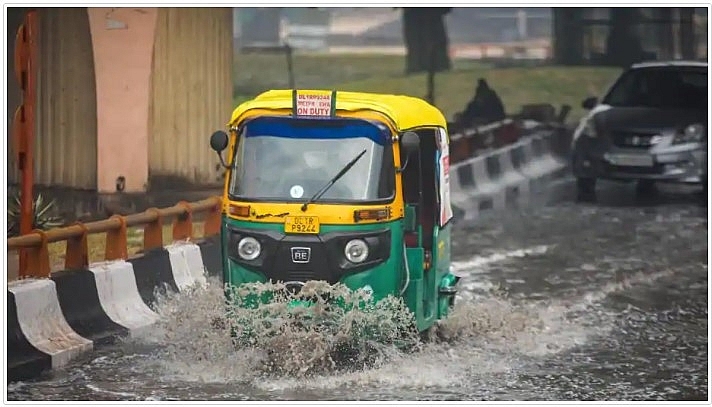 |
| Vehicles crossing a waterlogged stretch after morning rains near AIIMS Hospital in New Delhi on Sunday. (Amal KS/HT PHOTO) |
Rails will reduce significantly by January 6th. Good rains are also possible over Tamil Nadu and scattered over south Karnataka and Kerala during the next two days.
Several areas in Delhi are likely to experience thunderstorm and light showers in the next two hours, the India Meteorological Department (IMD) said on Monday. “Thunderstorm with light to moderate intensity rain is likely to occur over and adjoining areas of isolated places of West, North-West and North Delhi during the next 2 hours,” the weather department said.
Between 8.30am on Saturday and 2.30pm on Sunday, Delhi recorded 39.9mm rain, which is far higher than the 21.7mm average rain quota for all of January. More rain, as well as hailstorm and thunderstorms, are expected till Tuesday, according to IMD scientists.
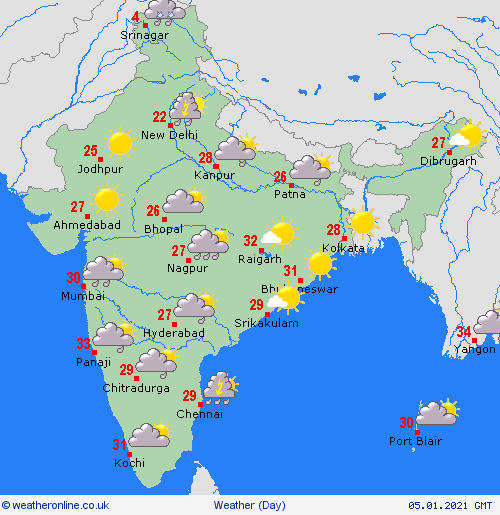 |
| Photo: Weather Online |
An active western disturbance is lying as a middle and upper-level cyclonic circulation over central Pakistan with its induced cyclonic circulation over southwest Rajasthan. A north-south zone of wind confluence is also observed from north Punjab to the northeast Arabian Sea, with a strong interaction between southwesterly winds and lower level moist southeasterlies, Hindustan Times reported.
These conditions are likely to persist till January 5 due to which moderate to intense rain with thunderstorm, lightning and hailstorm at isolated places in northwest India are expected till the night of January 5 with peak activity on January 3 and 4 over the plains (Punjab, Haryana, Chandigarh and Delhi, West Uttar Pradesh and north Rajasthan ) and on January 4 and 5 over the western Himalayan region (Jammu & Kashmir, Ladakh, Gilgit-Baltistan, Muzaffarabad, Himachal Pradesh and Uttarakhand).
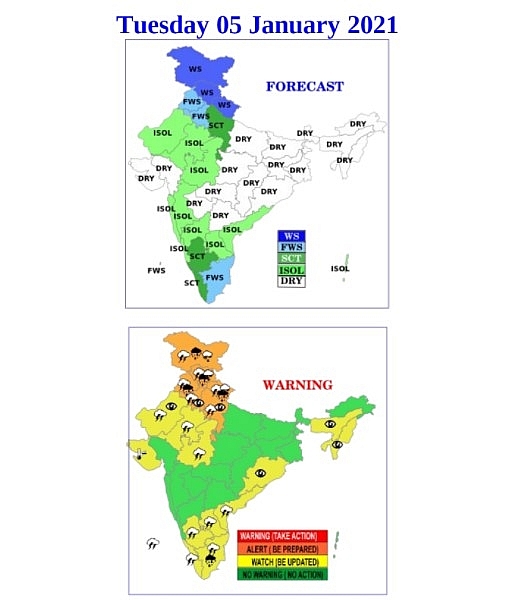 |
| Photo: IMD |
Also, after cessation of the wet spell, fresh northerly-northwesterly winds are likely to set in over plains of northwest India causing cold wave to severe cold wave conditions at isolated places over Punjab, Haryana and north Rajasthan from January 7 onwards, the IMD had earlier said.
Meanwhile, several regions in northwest India continue to receive widespread and heavy rain with thunderstorm and lightning. The Met department had predicted intense rain over Alwar, Tizara, Kotputli, Deeg, Bharatpur in Rajasthan; Aligarh, Jattari, Iglas, Khair, Sahaswan, Hathras, Barsana, Khurja, Anupshahar, Gabbana, Chandausi, Bhajoi, Sambhal in UP; Palwal, Hodal, Aurangabad, and Nuh in Haryana.
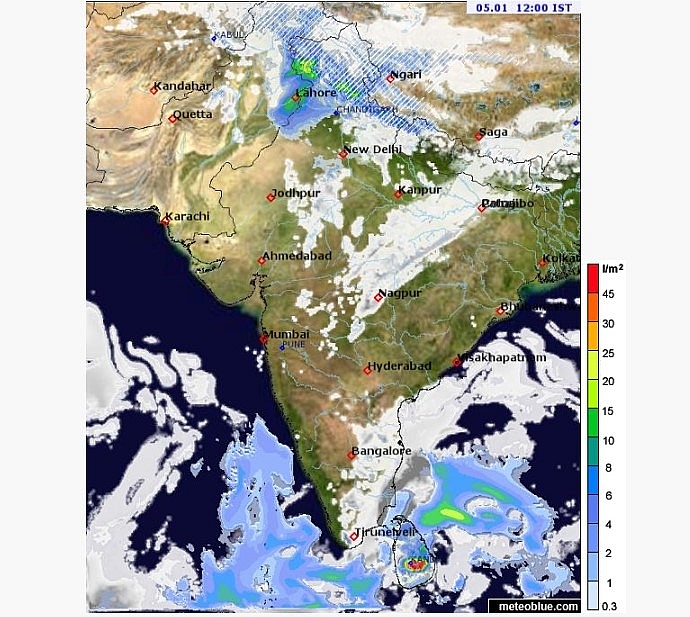 |
| Photo: meteoblue |
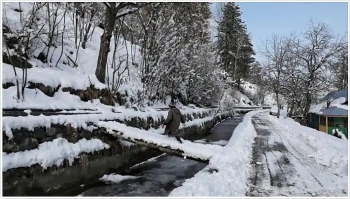 | India weather forecast latest, January 1: Minimum temperatures in northwest areas to slightly rise Minimum temperatures over most parts of northwest and central India are likely to rise by 3-5 degrees for three days from January 1, 2021. |
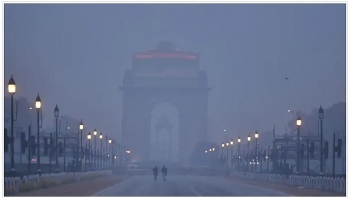 | India weather forecast latest, December 31: Many parts of northwest areas reach the freezing point India weather forecast latest, December 31: Air quality in most towns and cities in northwest India is in “poor” category while many parts are forecasted ... |
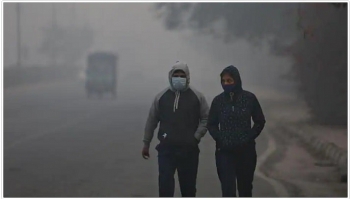 | India weather forecast latest, December 30: A cold wave with dense fog set to blanket as temperatures fall A cold wave is expected to the national capital with moderate to dense fog in the next four days. |
Recommended
 World
World
Pakistan NCRC report explores emerging child rights issues
 World
World
"India has right to defend herself against terror," says German Foreign Minister, endorses Op Sindoor
 World
World
‘We stand with India’: Japan, UAE back New Delhi over its global outreach against terror
 World
World
'Action Was Entirely Justifiable': Former US NSA John Bolton Backs India's Right After Pahalgam Attack
 World
World
US, China Conclude Trade Talks with Positive Outcome
 World
World
Nifty, Sensex jumped more than 2% in opening as India-Pakistan tensions ease
 World
World
Easing of US-China Tariffs: Markets React Positively, Experts Remain Cautious
 World
World

